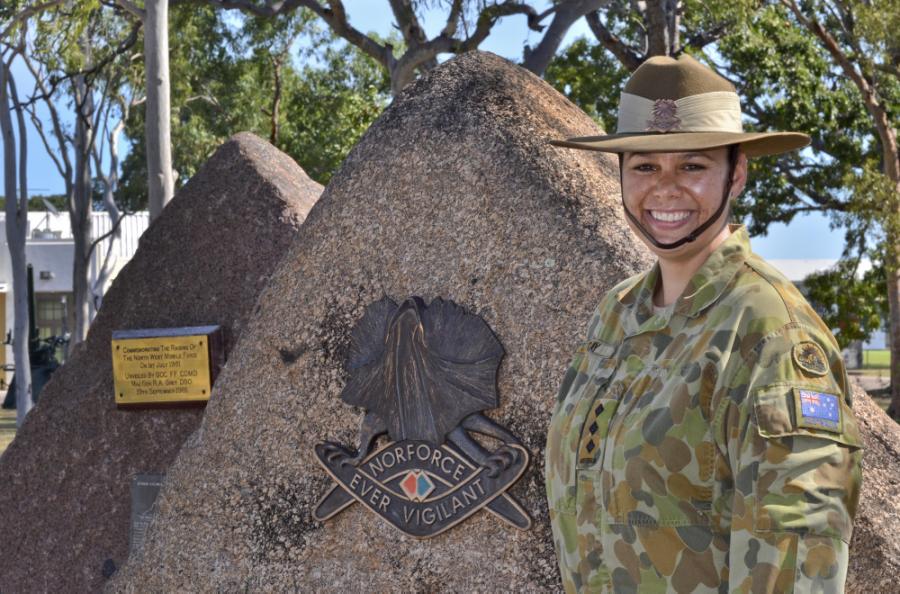Chloe Dray

A descendent of the Gungurri people, Captain Chloe Dray is a third-generation serviceperson. Her father served as an instrument fitter in the Royal Australian Air Force for more than a decade, and both her grandfathers also served: one in the army during the Second World War and the other in the Royal Australian Navy in Korea, Malaya, and Japan.
Dray served in the Regional Surveillance Unit North West Mobile Force. Known as NORFORCE, this unit is responsible for surveillance, reconnaissance, and community engagement operations across the Northern Territory and some areas of Western Australia. Many of this unit's personnel are Aboriginal and Torres Strait Islander people recruited from the region they patrol.
Dray was also deployed to Afghanistan as part of the Combined Team – Uruzgan. This multinational unit was based at Tarin Kowt, and was responsible for the International Security Assistance Force operations in Uruzgan province.
For Dray, her role in the army has not only allowed her to make a positive difference but also provided her with a sense of equality. In an article published in Army News, she explained: “it doesn’t matter if you’re black or if you’re white, because when you put on this uniform, we’re all wearing the green skin and we’re all treated the same”.
Activities for research and discussion
1. Why do you think NORFORCE troops are recruited locally? What skills might they be able to bring to the unit?
2. What are some of the challenges NORFORCE troops might face while on patrol in this environment?
3. In 2012 official war artist Tony Albert was attached to the Regional Surveillance Unit North West Mobile Force (NORFORCE), and trained alongside new recruits in an effort to understand the skills and qualities required to be a soldier in this unit. He created this poster some months later in response to his experience. What words and symbols can you see? What does this tell you about Albert’s attitude to NORFORCE?
4. Use the work of art above as inspiration and create your own NORFORCE poster. What is your purpose? Who is your audience? What techniques will you use to appeal to that audience?
5. While working as an official war artist in Afghanistan Ben Quilty sought to capture the experiences of Australian servicemen and servicewomen. How are his own emotions and reactions to Kandahar portrayed in this painting? What does it suggest about the environment in Afghanistan and nature of life for Australian service personnel?


